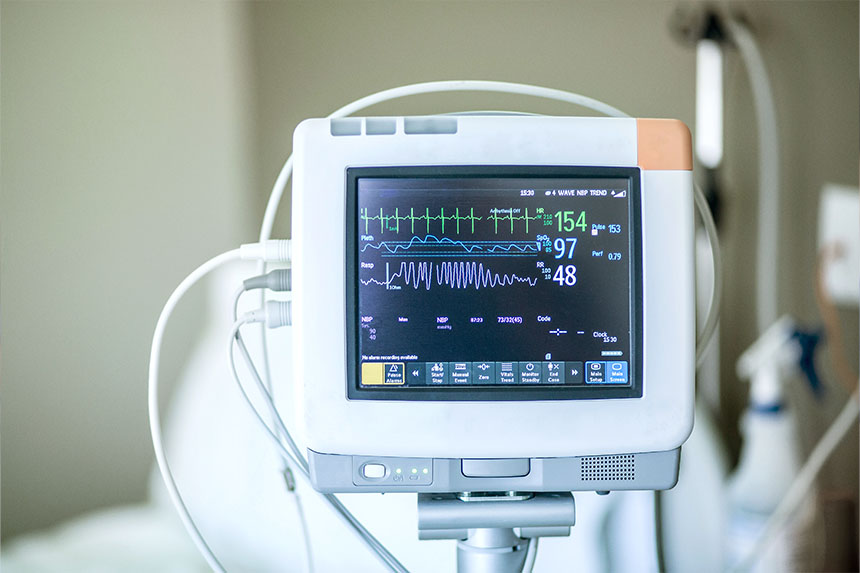Make your med device business recession-resistant with smart sales and marketing investments
Jul 21st, 2022

As a medical device manufacturer, you find yourself in a unique situation when a recession hits: Patients still need care. Providers still need to deliver that care. And your device is still needed to support patient care.
Supply chain disruptions and inflation are pushing costs upward and complicating logistics for both suppliers and manufacturers. As consumers begin to tighten their wallets during the economic downturn, some businesses feel compelled to follow suit.
Likewise, many medical device organizations choose to curb spending when talks of recession loom, but this isn’t always the best strategy. If your competitors are cutting back, it might actually be time to go full force. Read on to learn why.
Keep inventory on hand— the market will thank you
Operating with a lot of inventory-related overhead isn’t usually a smart business decision, particularly during uncertain economic times, and can cause problems with warehousing space and associated costs. However, in the medical device industry, it’s often wise to keep a certain level of safety stock for situations like competitive disruptions, supply chain disruptions or other unanticipated spikes in demand.
You’ll need to determine the appropriate safety stock levels for your organization, as the ideal volume will vary from product to product and market to market. Safety stock levels may not even be possible if you’ve already depleted your supply or if new supply is unsteady or uncertain.
But why am I talking about supply when this is supposed to be about sales and marketing in the face of a recession?
Simply put, it’s tough to market and even tougher to sell if you don’t have product. Supply chain, customer experience, marketing and sales teams should be aligned on supply to ensure new customers can be targeted, engaged and onboarded as usual.
For instance, sales should know before they close a deal precisely when that customer can be onboarded. Likewise, customer experience and clinical education should be able to set and communicate an onboarding timeline based on your ability to supply.
Set your timelines around your supply chain
New customer onboarding and implementation timelines can be a great buffer, which is why it’s important to establish an onboarding strategy with standard steps and timelines. This will enable your teams to establish an expected duration for the onboarding process, better preparing both your customer and your internal teams.
By putting these processes in place, you may be able to plan more strategically around your supply chain. An accurate understanding of your supply, logistics and new account engagement processes can help your organization to avoid business-disrupting delays and continue actively selling and marketing your device in order to build new customer pipeline during a recession.
Onboarding plans can be set up using a supply chain assessment to determine when your organization can supply a new account in full, making it easier to arrange a smooth and seamless transition for the account. Additionally, if you wait to invest in sales and marketing until you have perfect conditions, your new customer pipeline may dry up and you’ll be left playing catch-up.
Patients still need your device, and clinicians are always looking for ways to improve cost and patient outcomes. To help keep your business profitable during a recession, you should evaluate putting in place strategic processes to keep your sales and marketing teams moving full-steam ahead to acquire new business.
What about hospitals curbing their spending?
If people aren’t buying, why should your organization continue spending on sales and marketing?
It’s a fair question. We’ve all seen the headlines: Hospitals are experiencing staffing shortages and cutting back capital spend, but they are still devoted to patient outcomes.
Positive patient outcomes are correlated to low readmission rates and better quality ratings, which mean better reimbursement rates and lower overall patient care costs. If your device can improve patient outcomes, that improves the bottom-line for the hospital and gives them an economic reason to make a change.
If your device can improve clinician workflow in a way that saves staff time and/or costs, you have an economic story that could cause a hospital to make a change. Using market insights from reliable commercial intelligence—something your organization should prioritize if you don’t already have on hand—you can identify the providers and facilities who can most benefit from your device, then target them for outreach.
So how are you going to get your clinical and economic value proposition out to your targets? That’s right: Through marketing and sales efforts—even in a recession.




